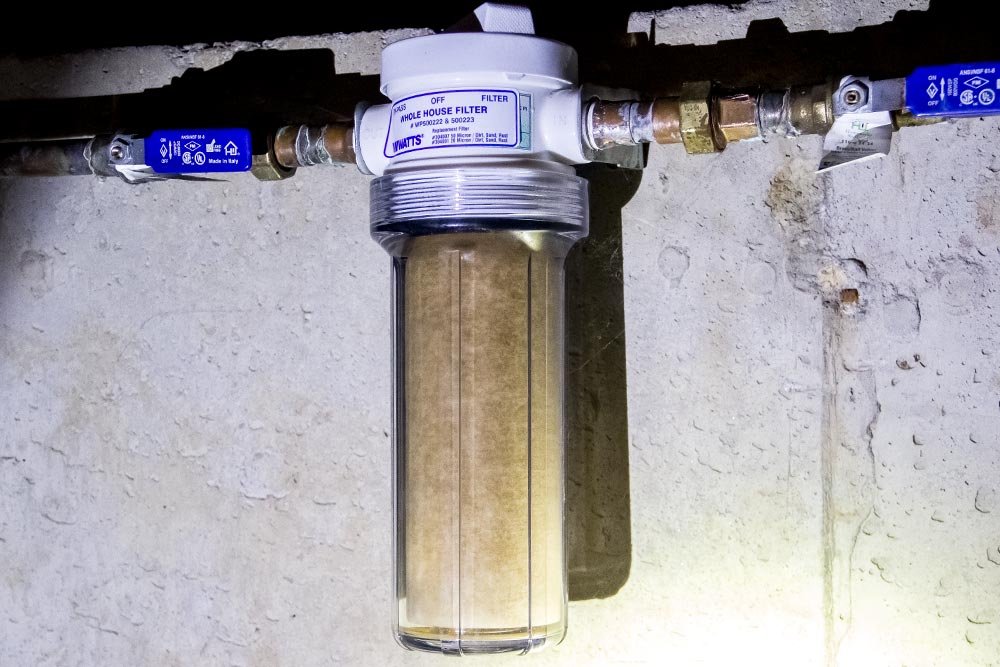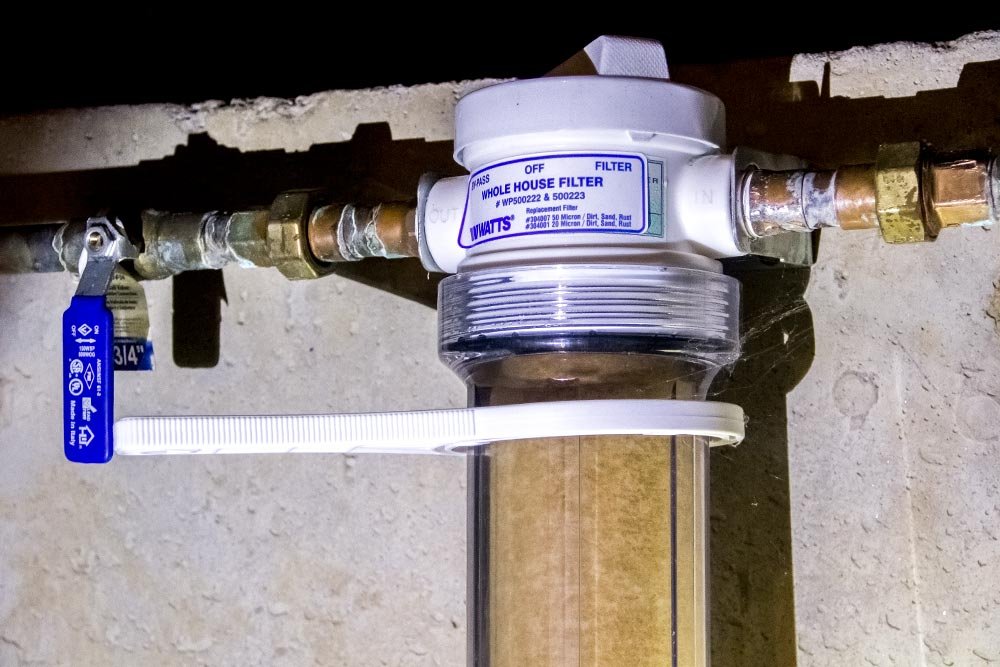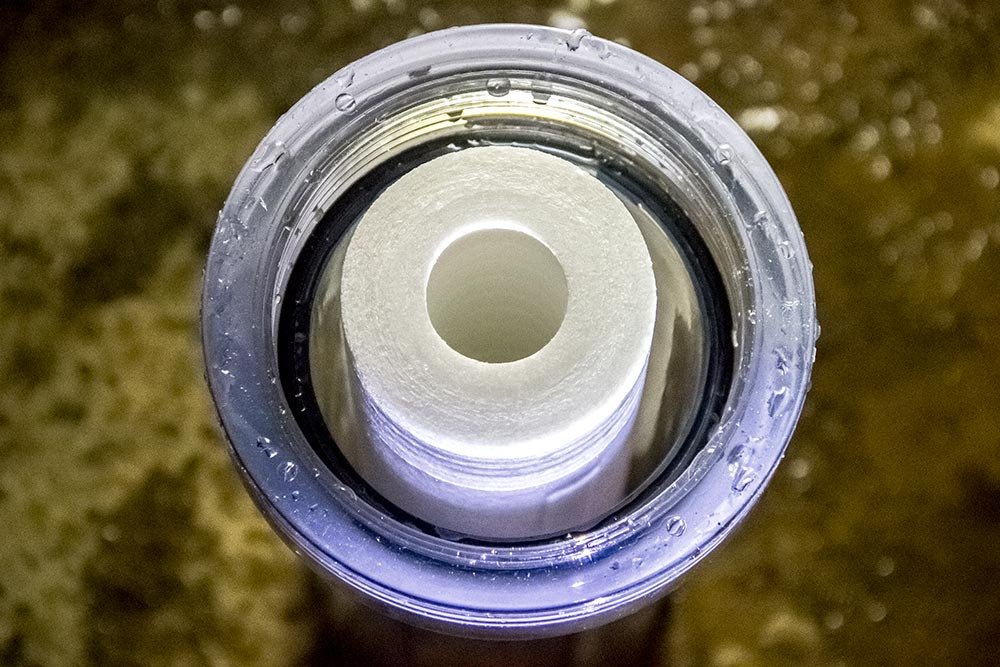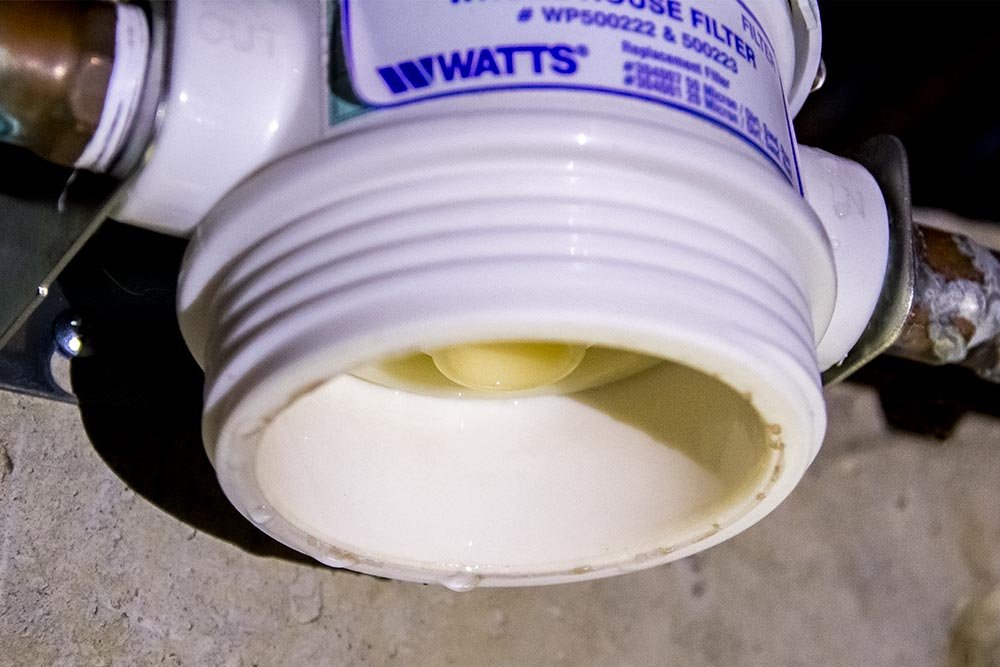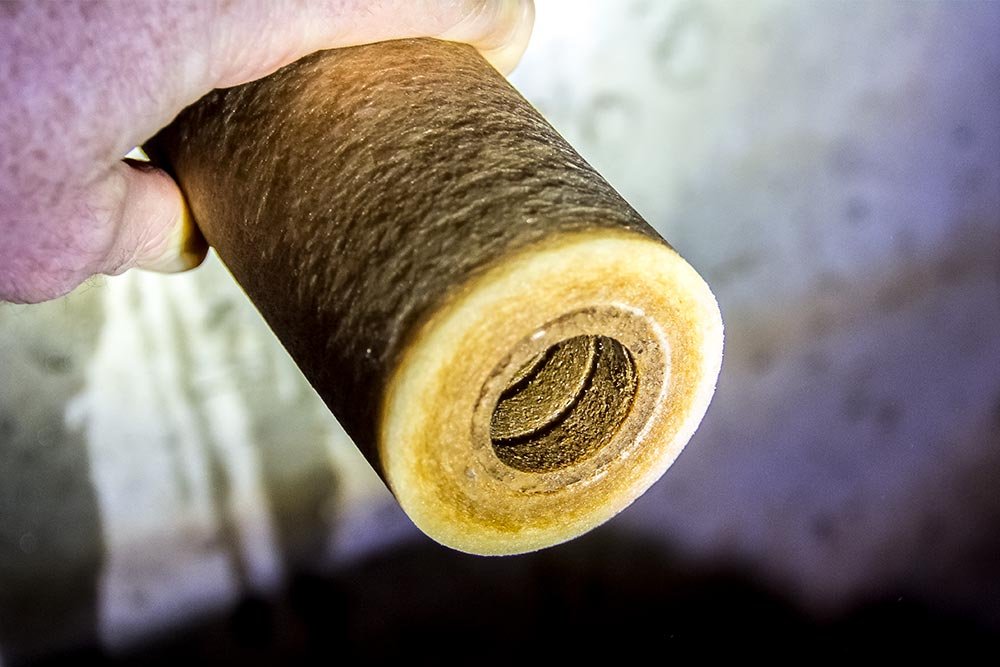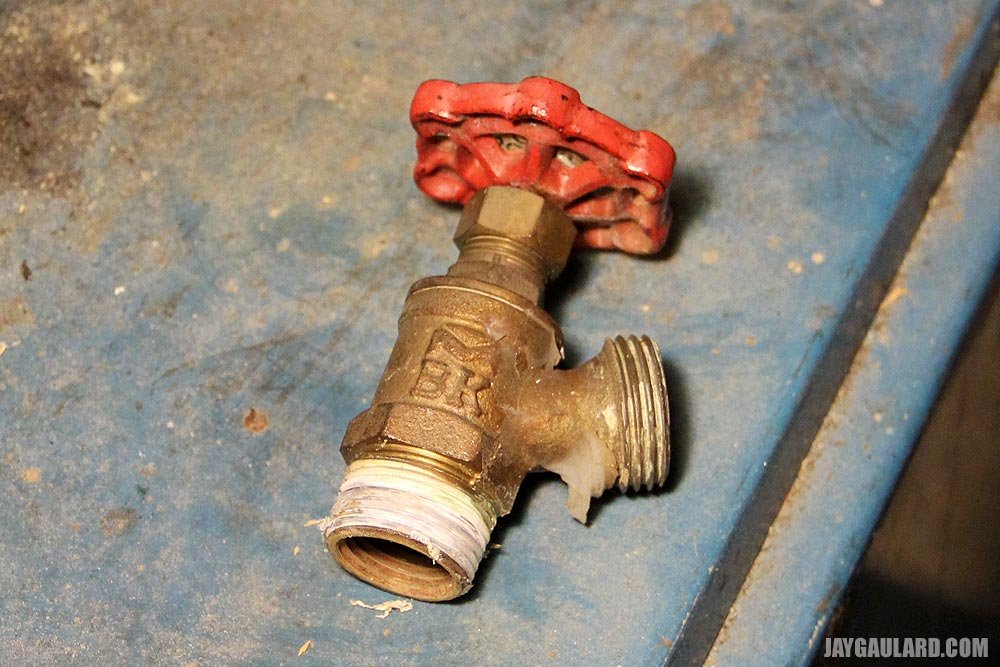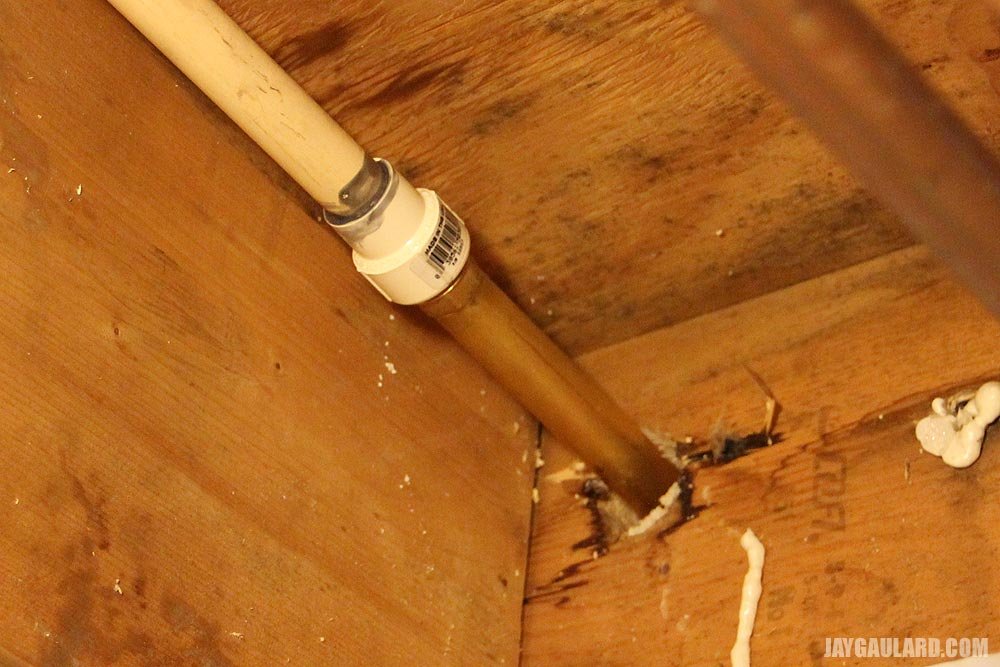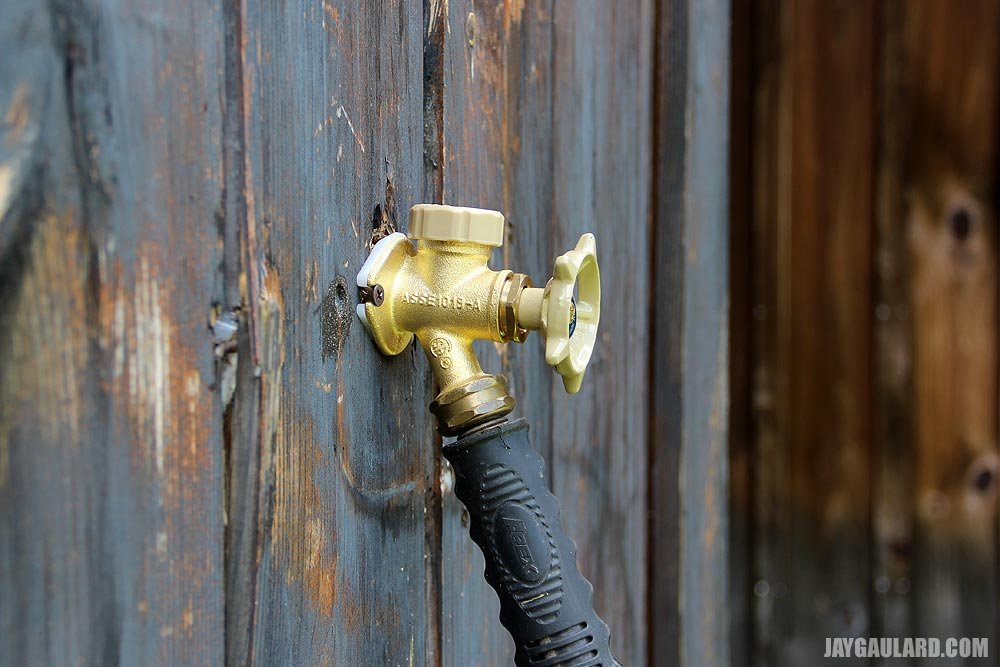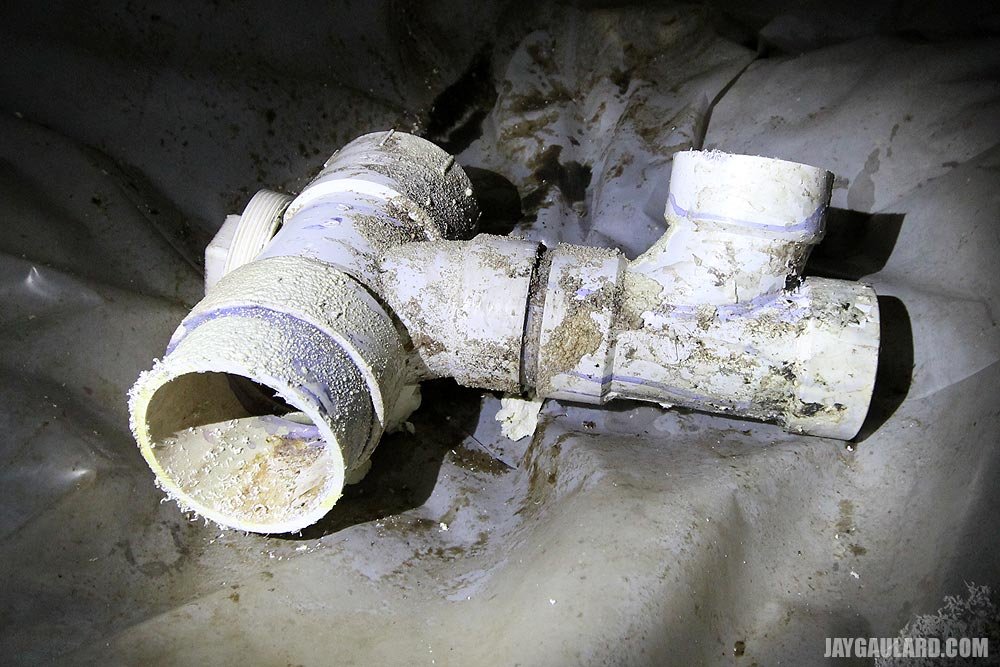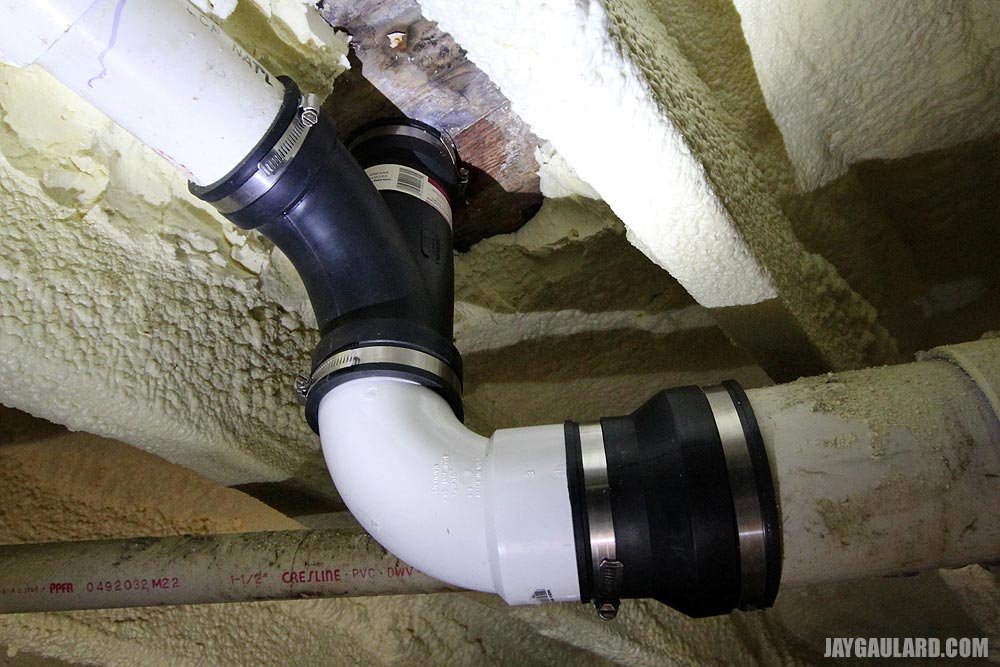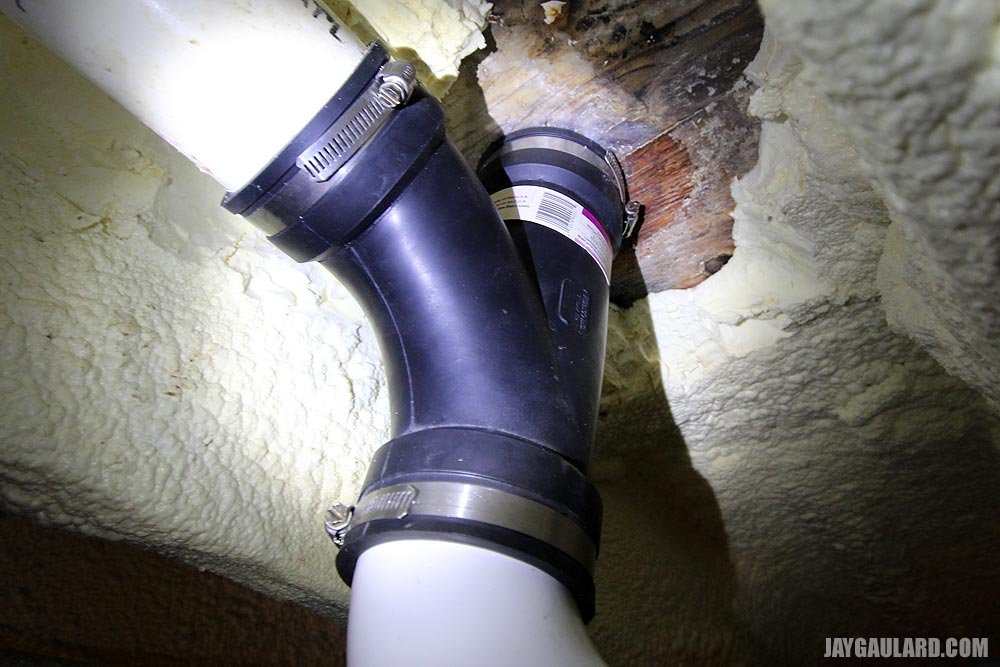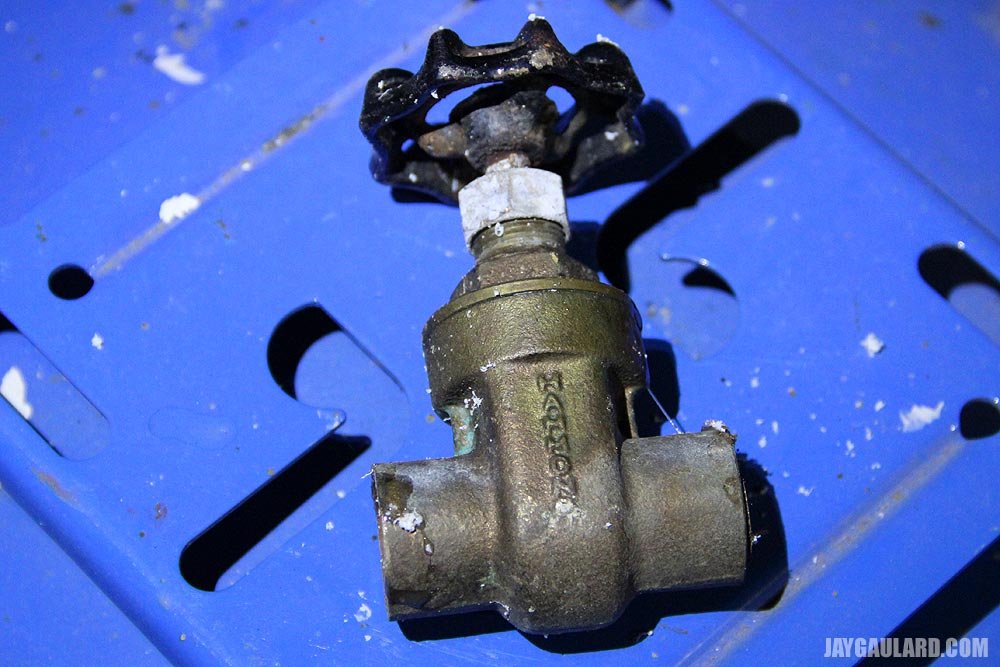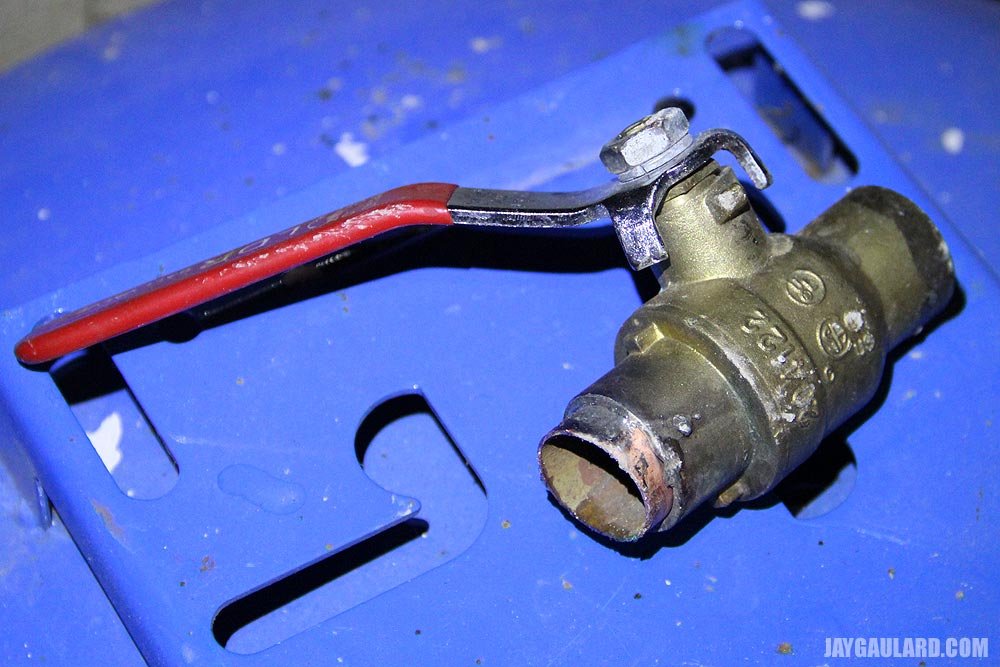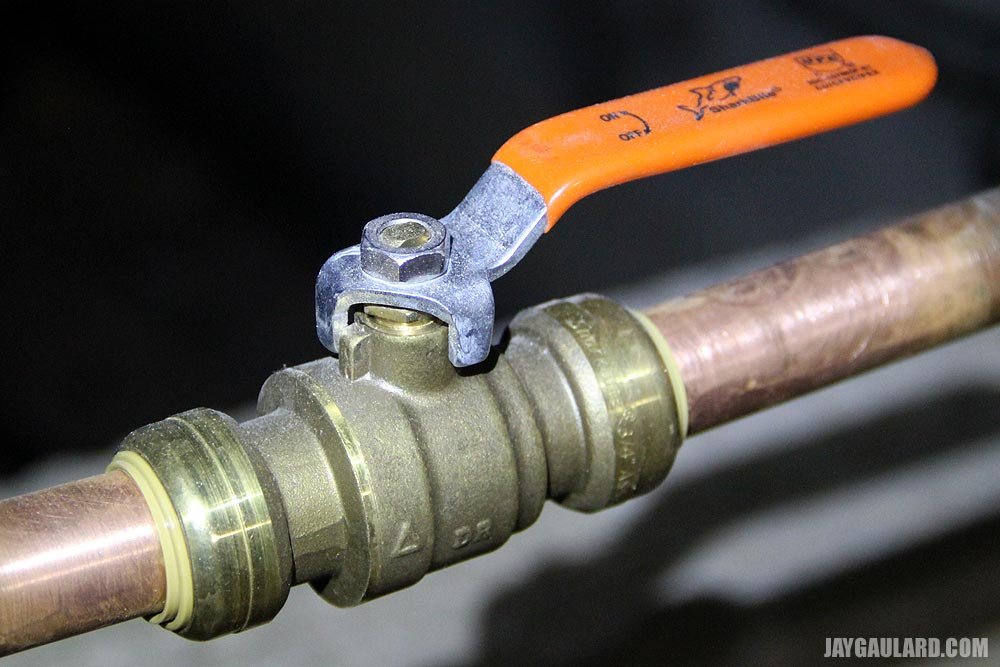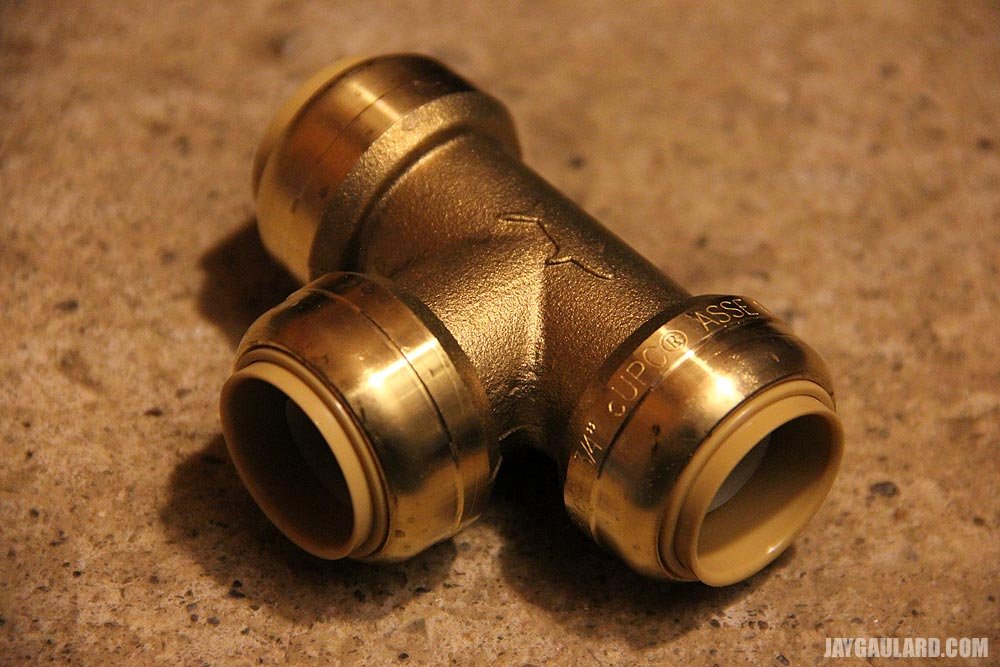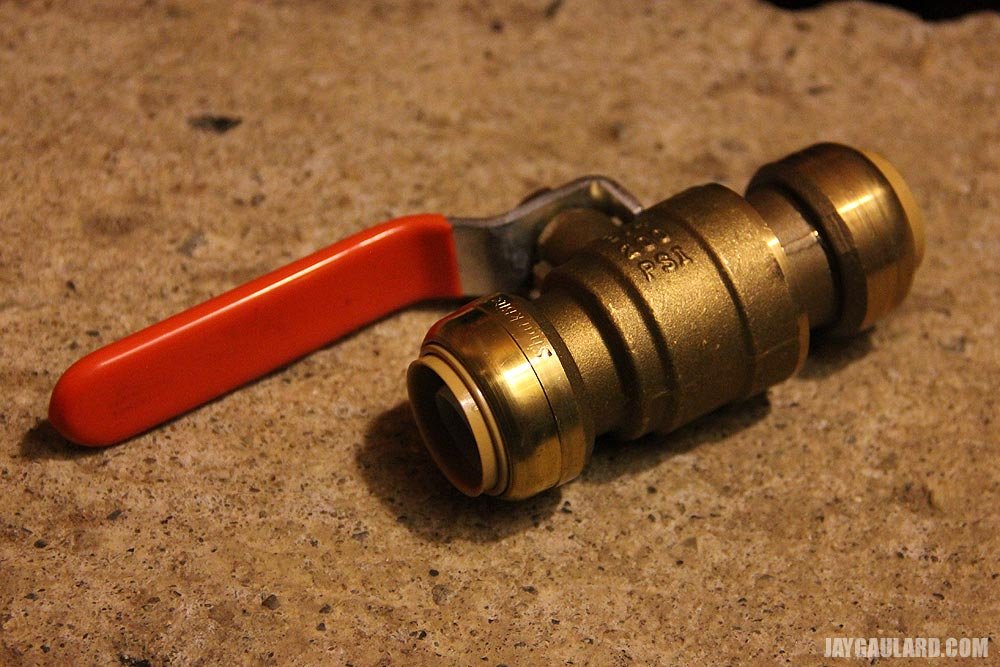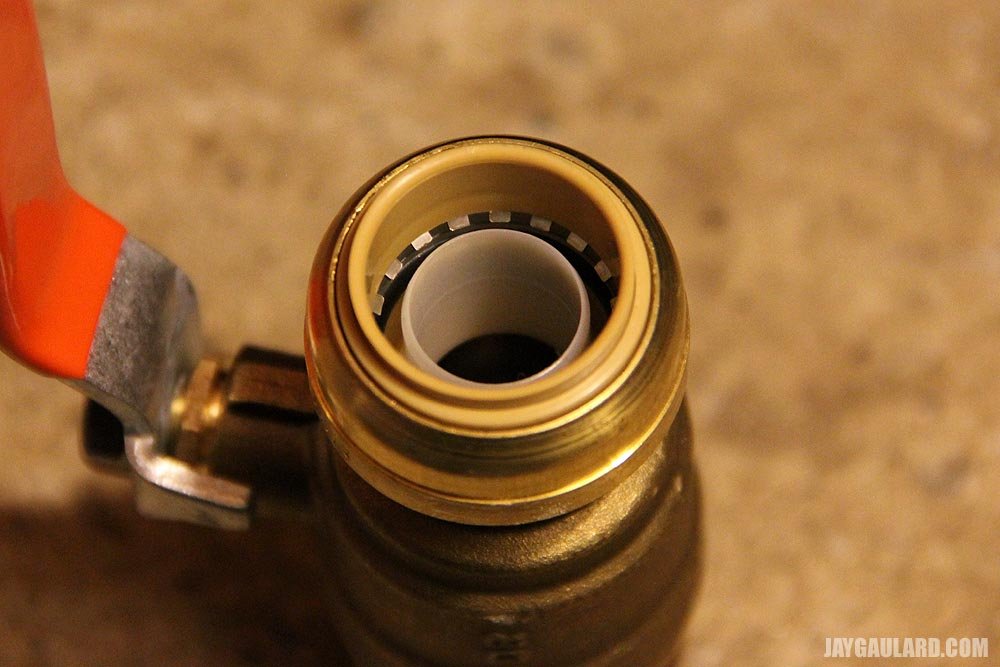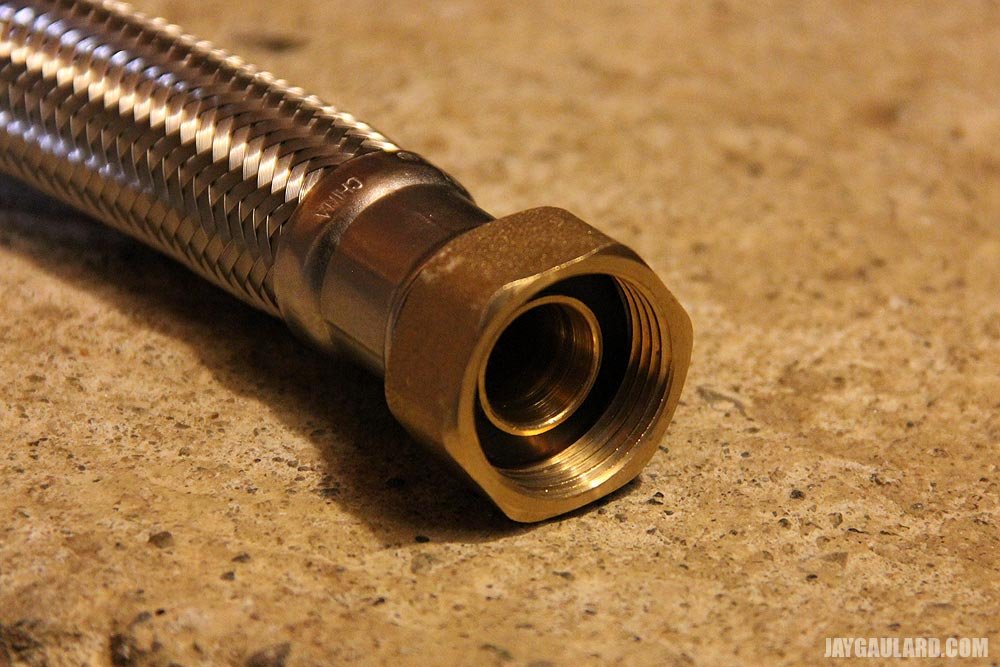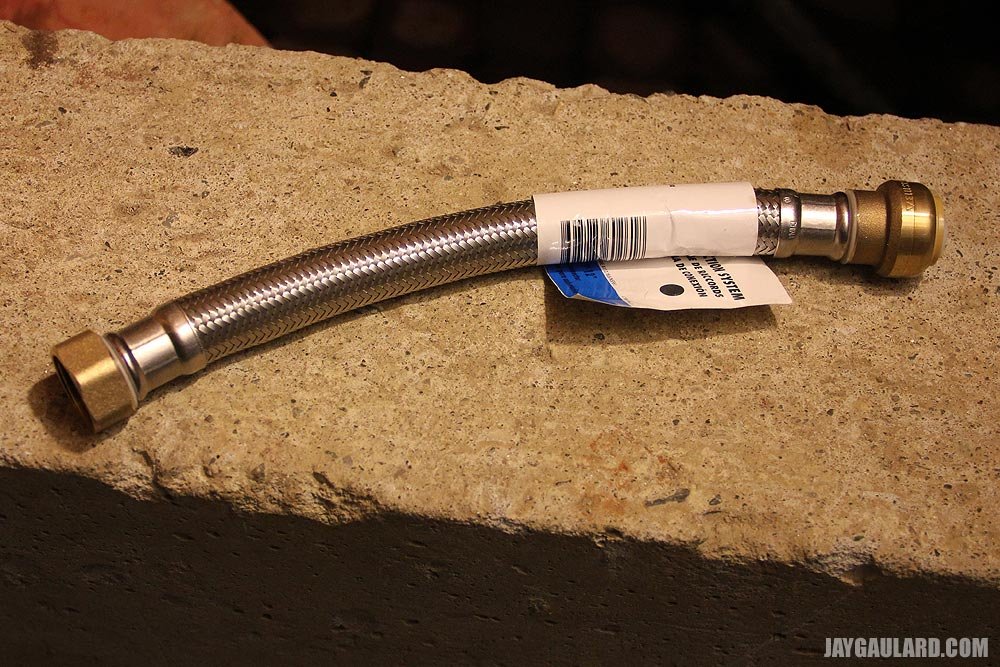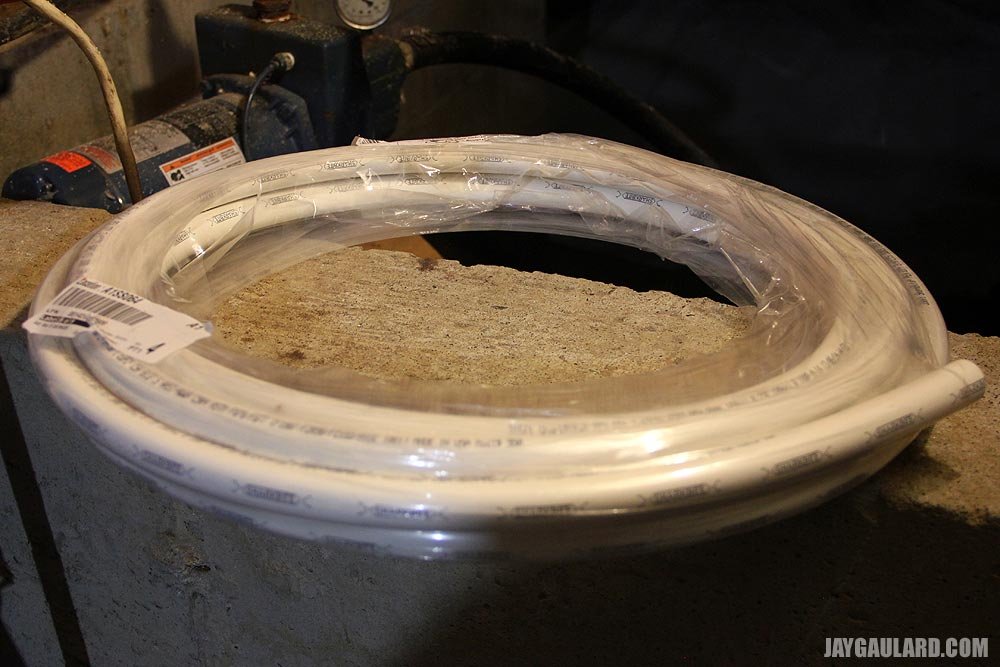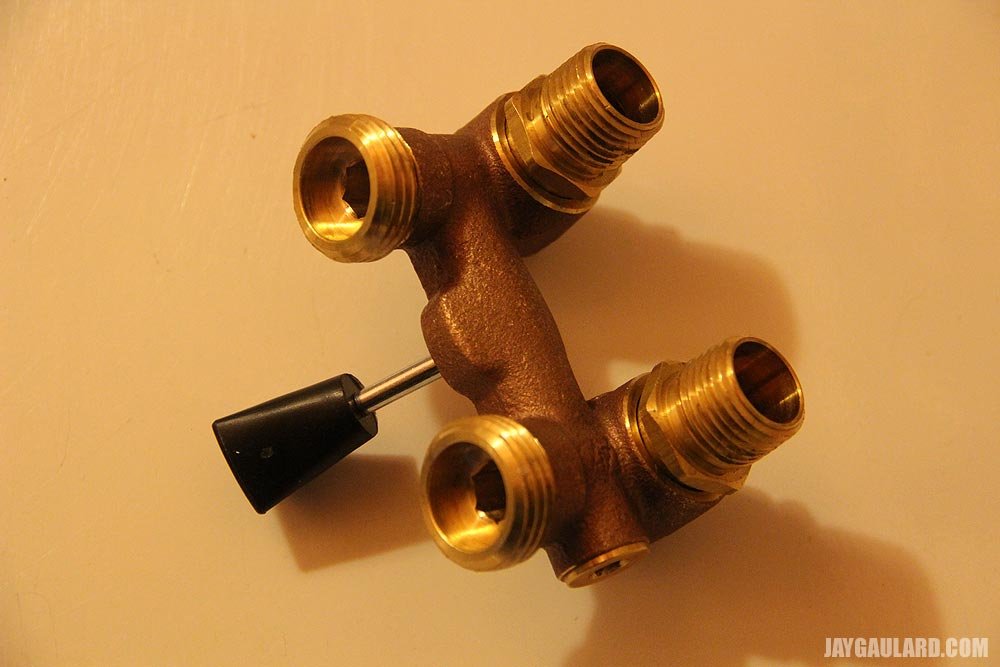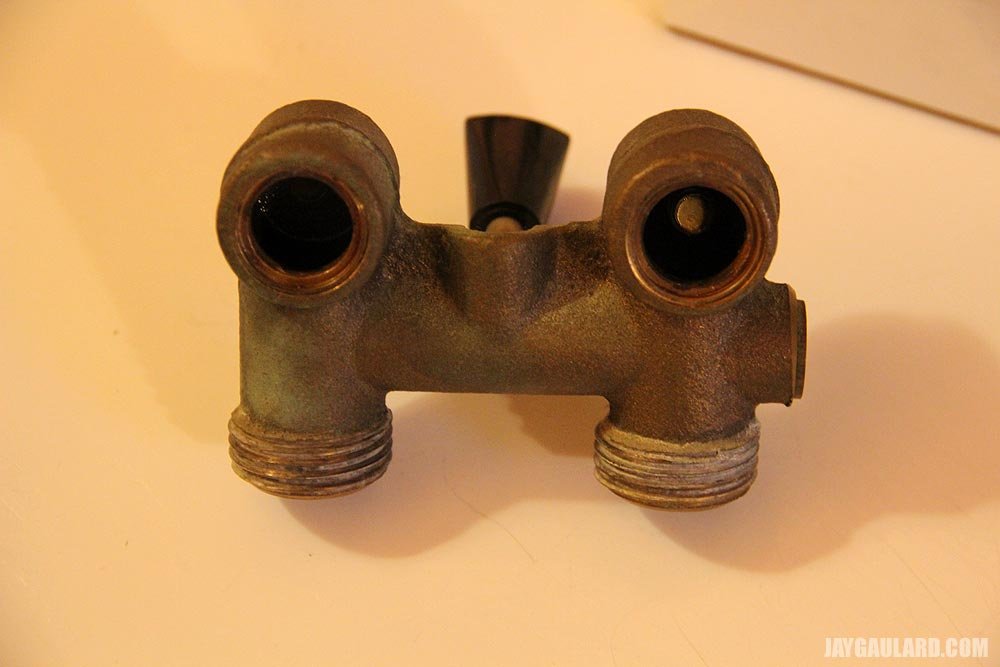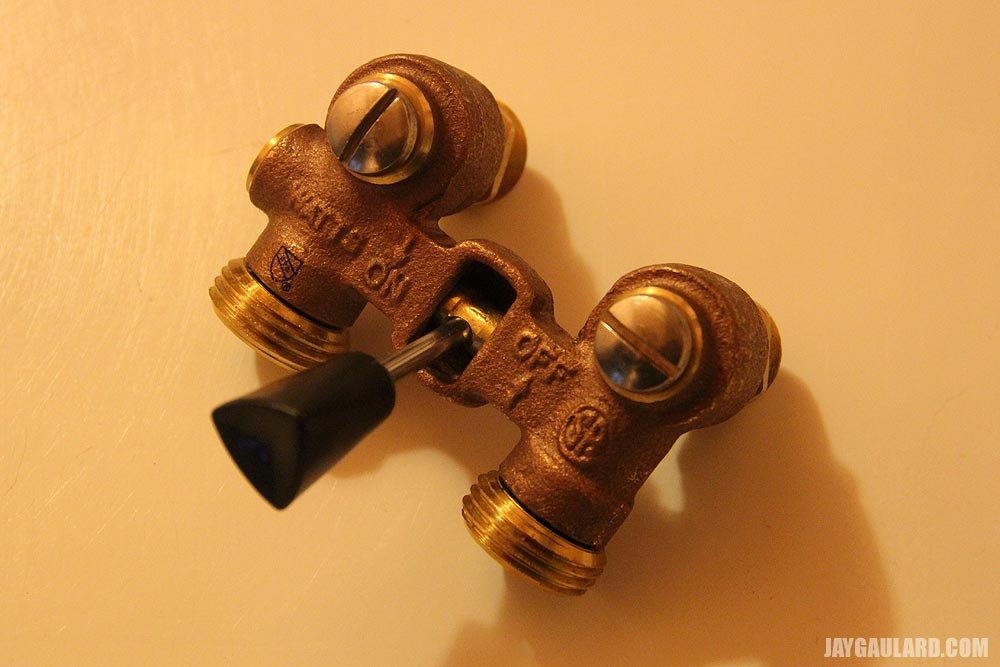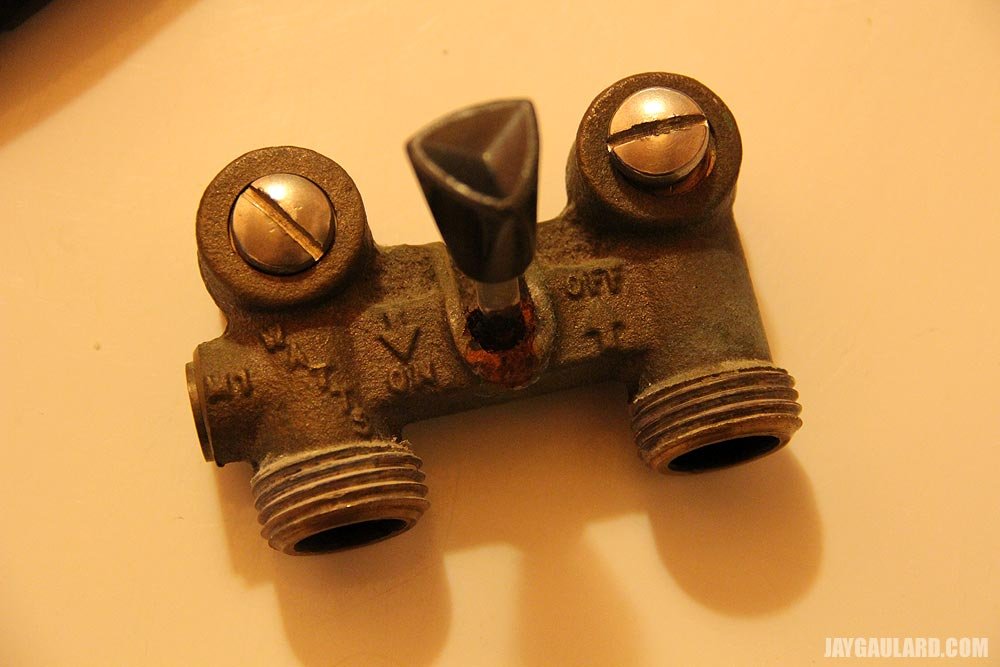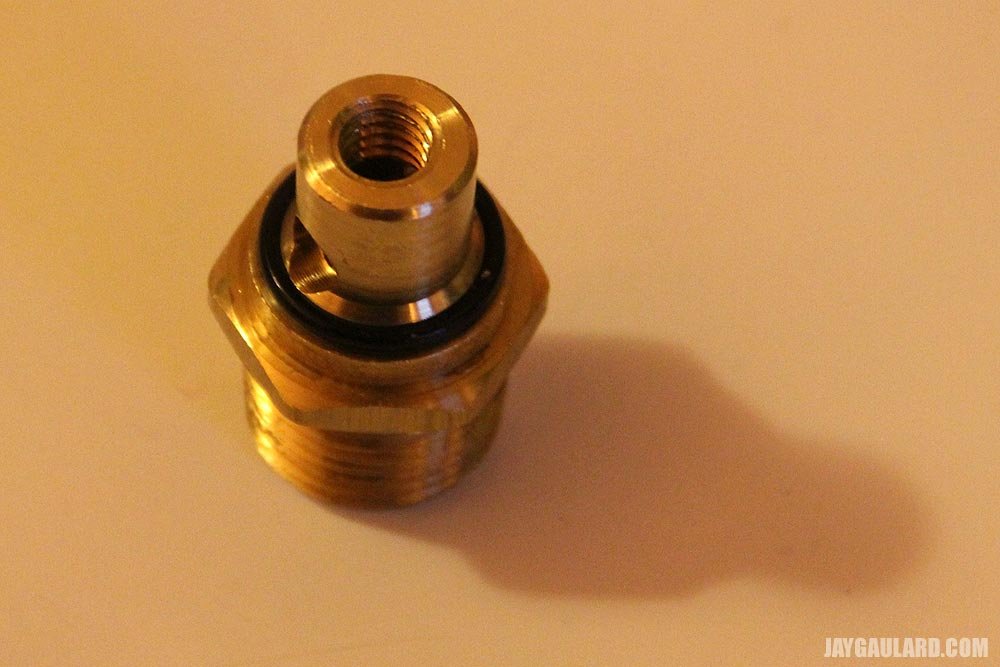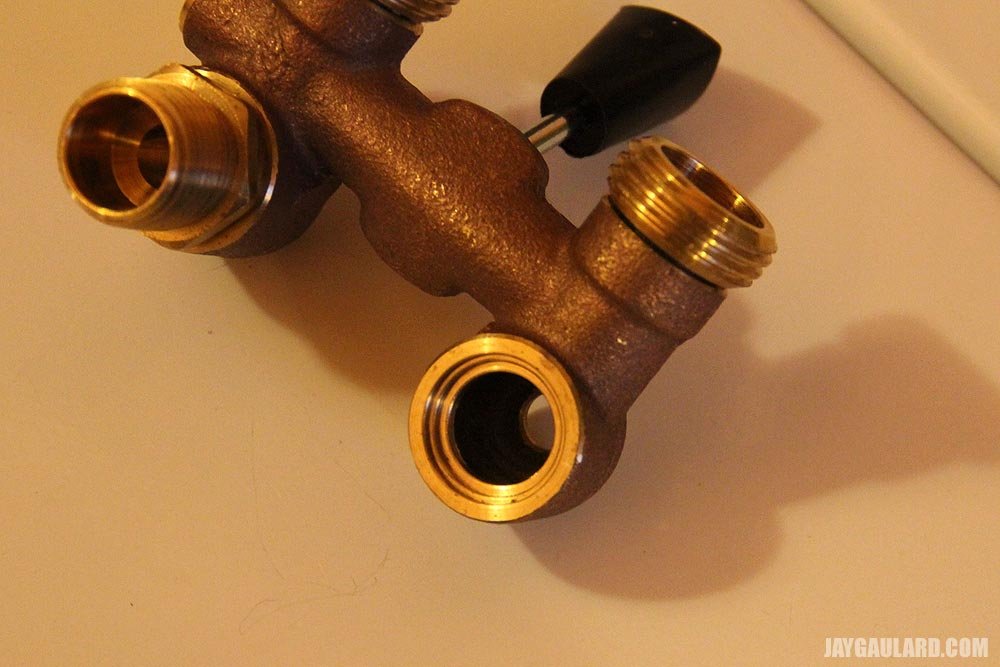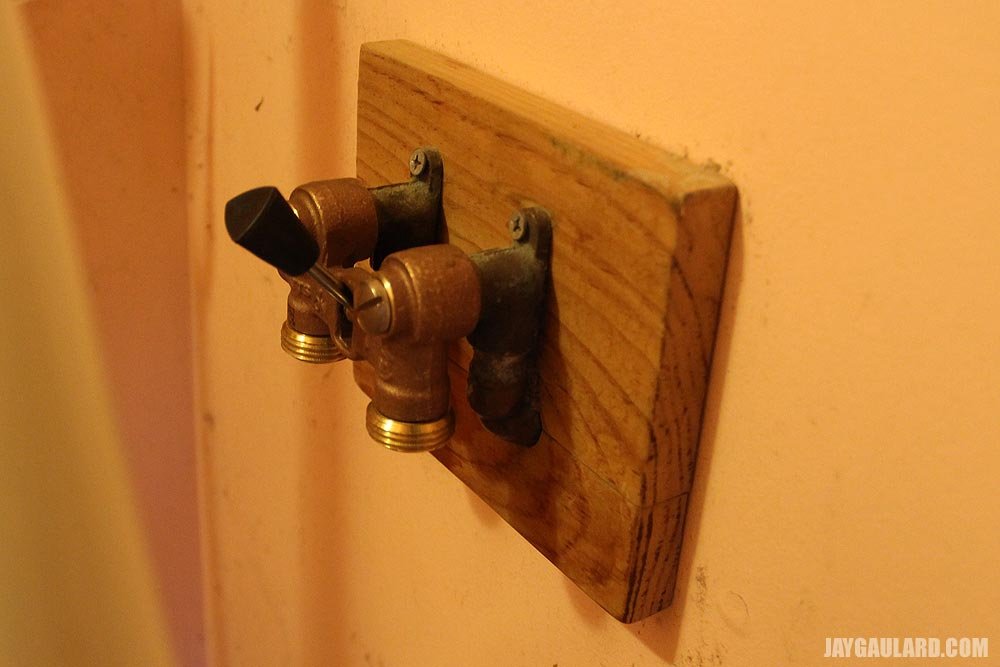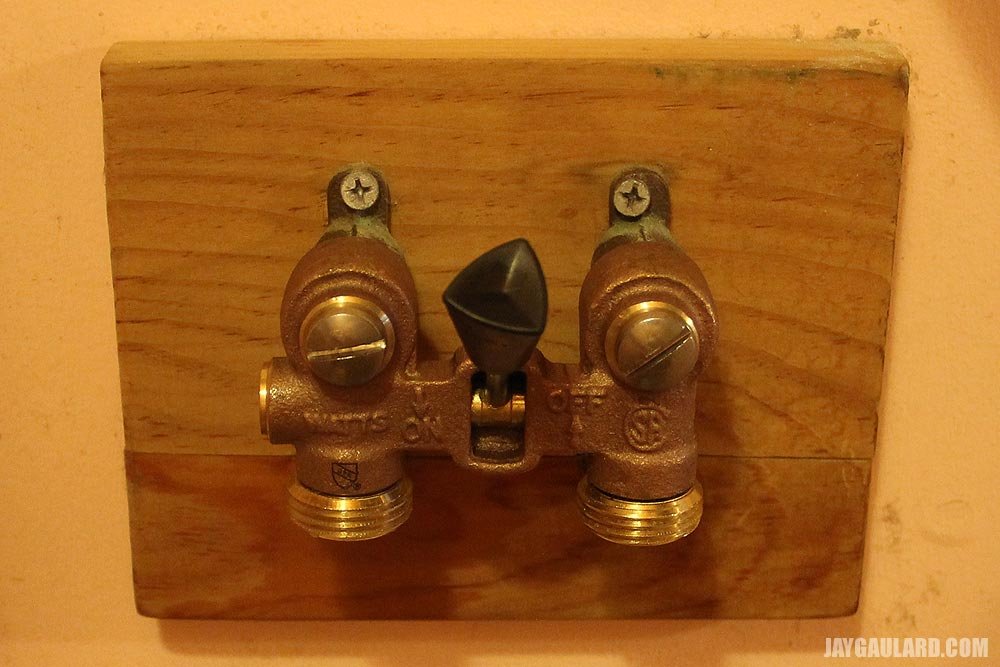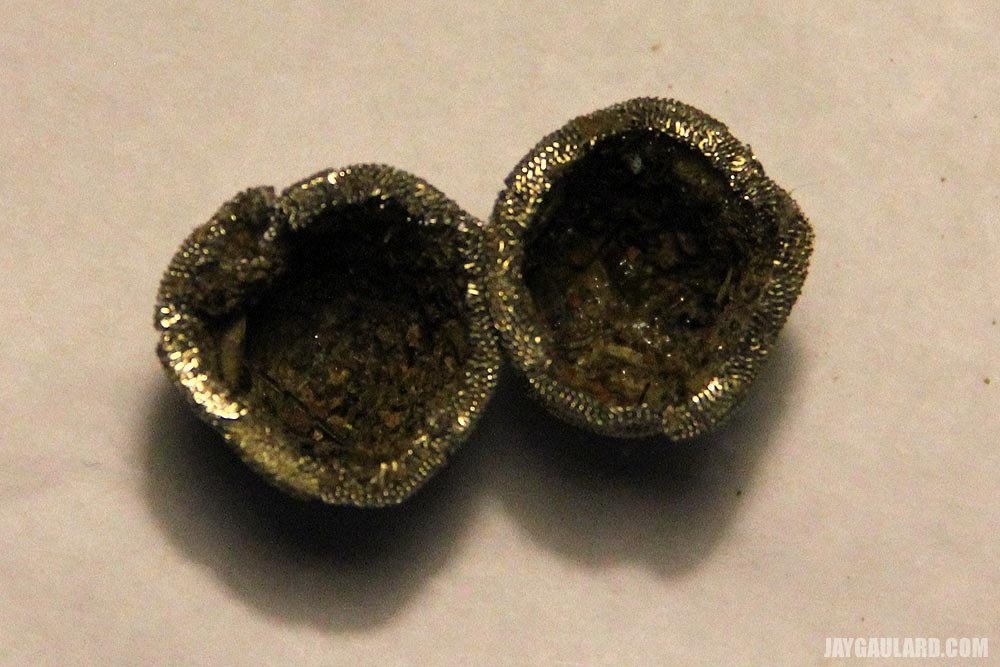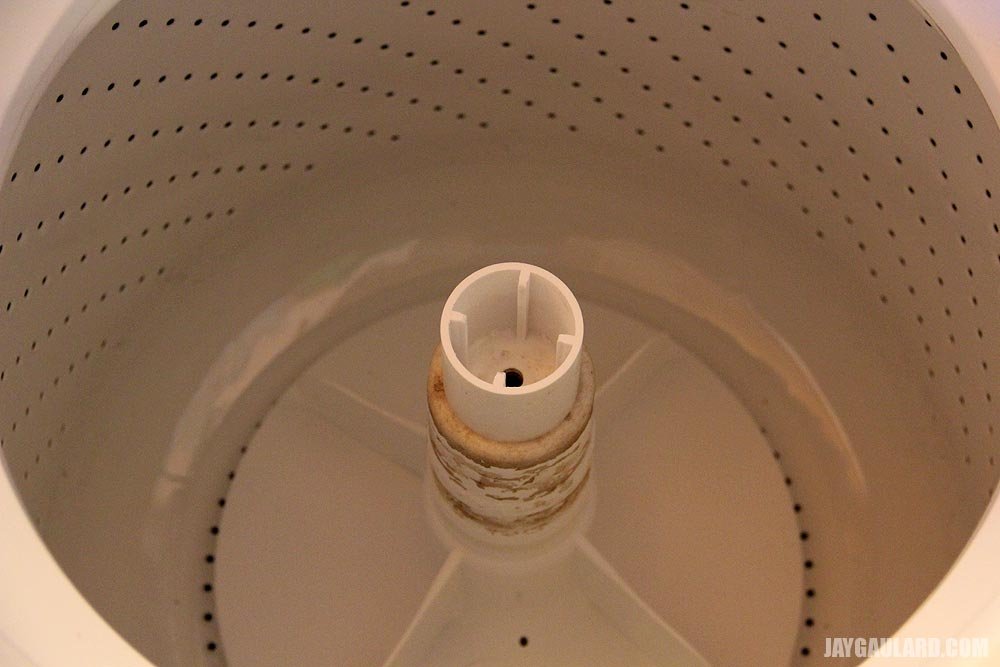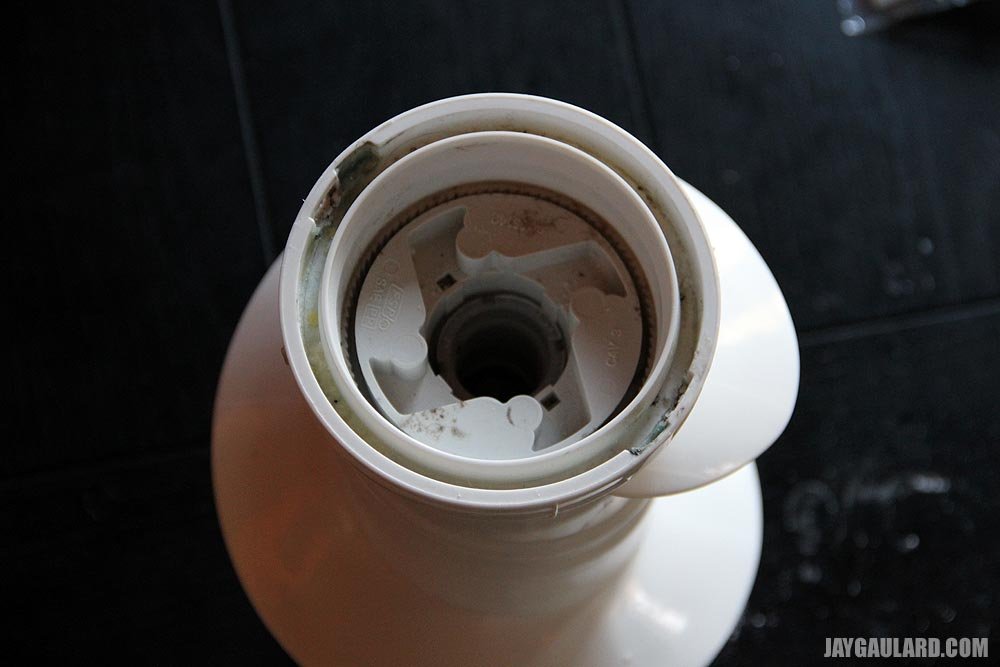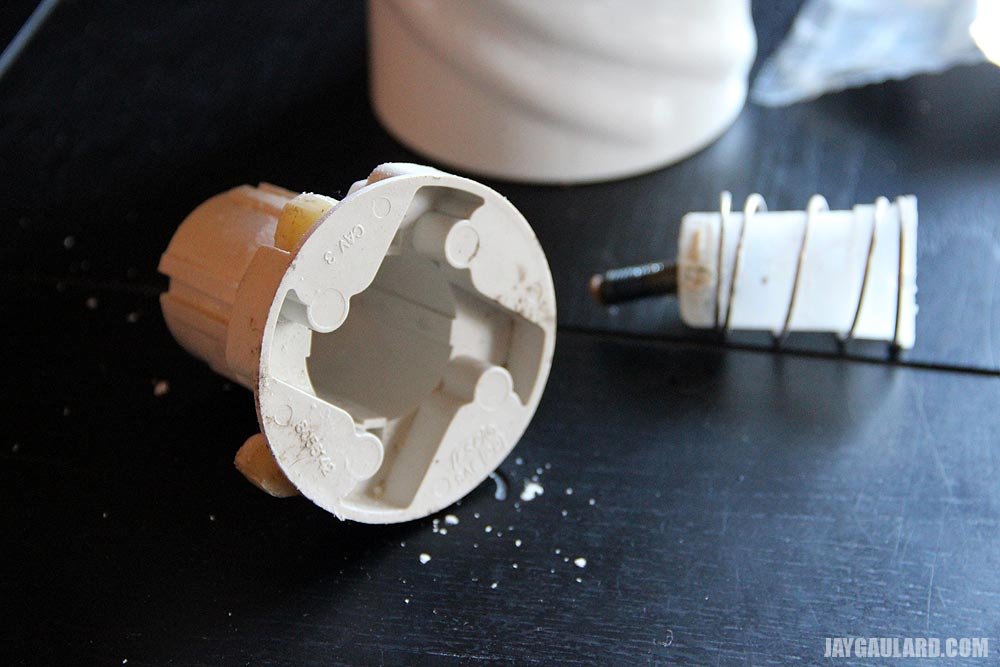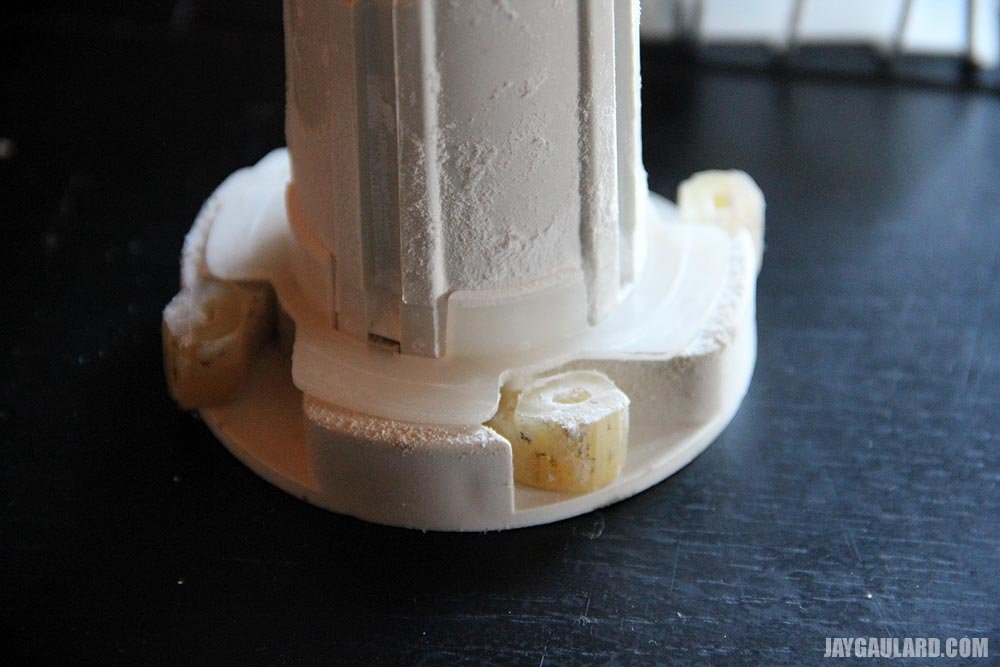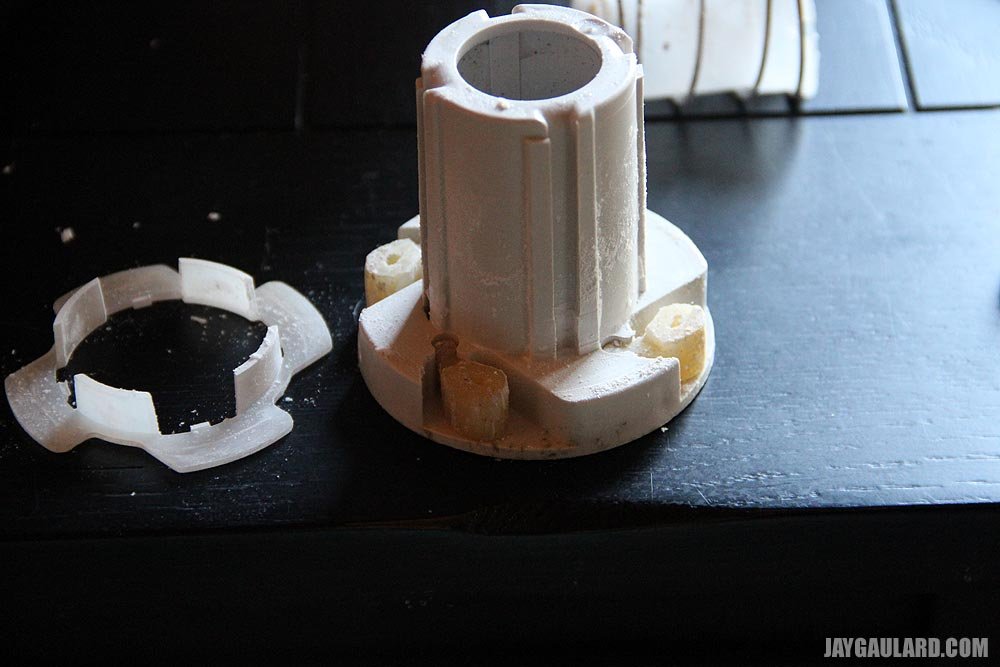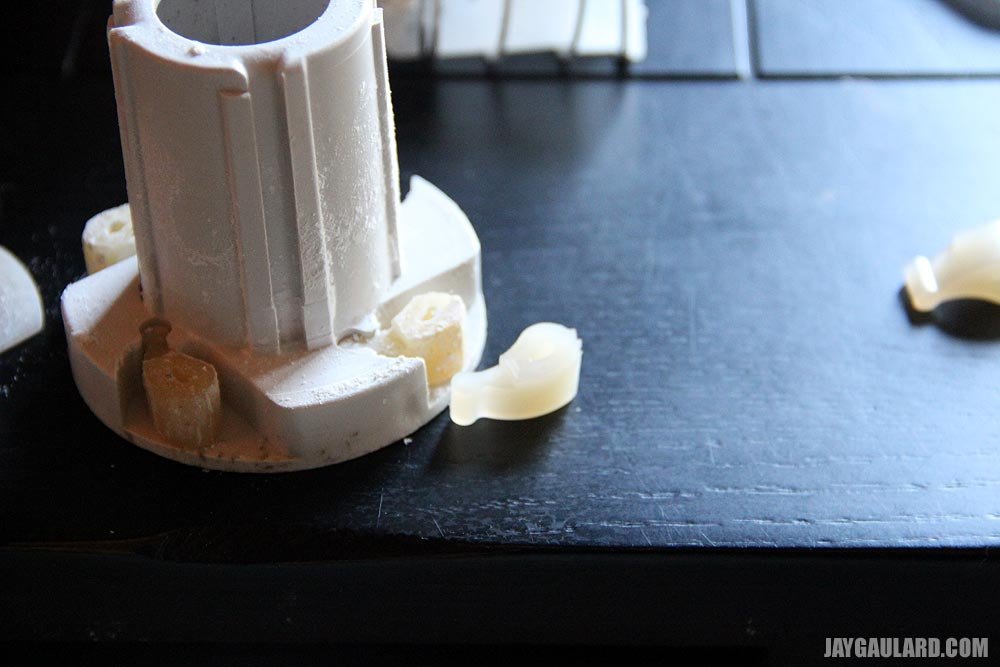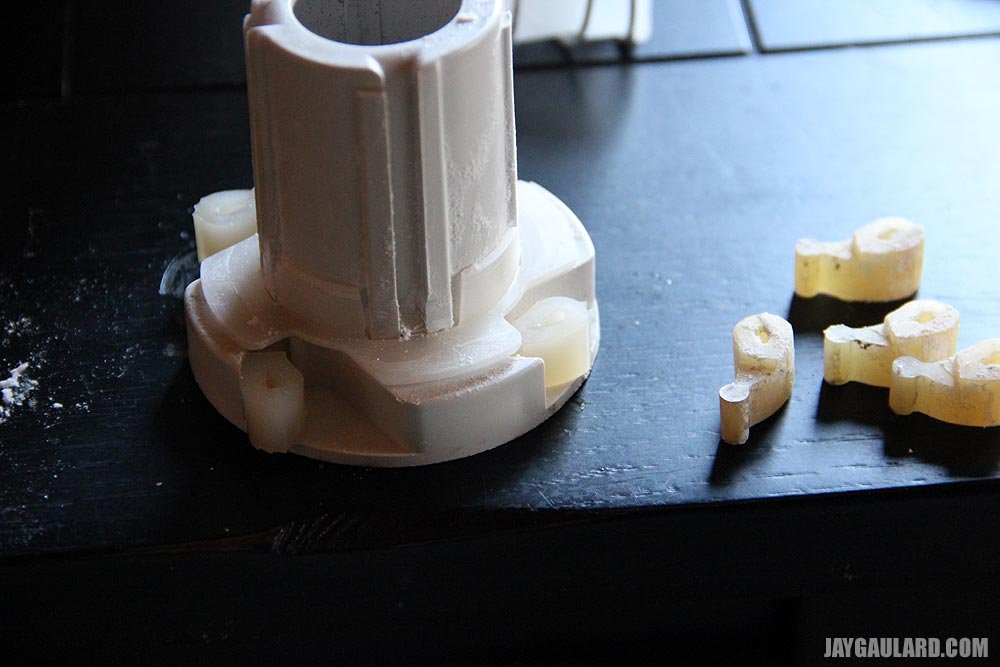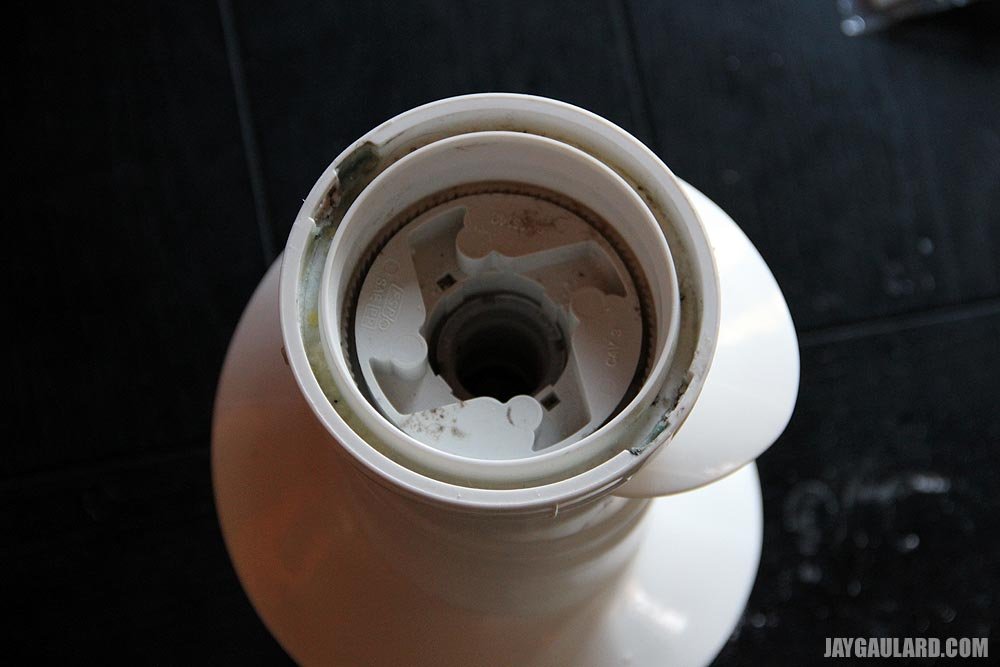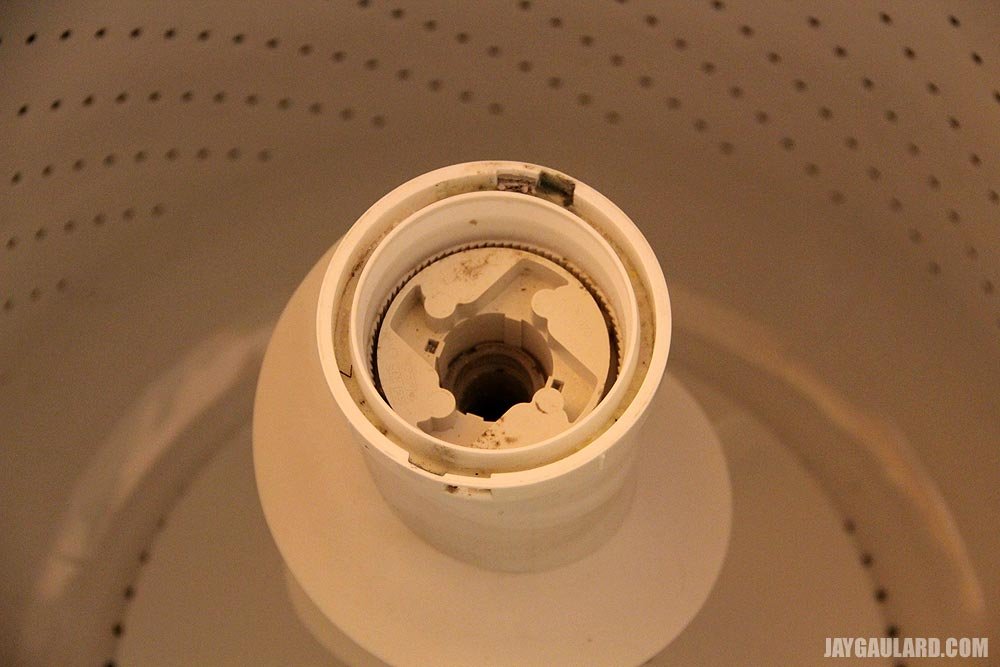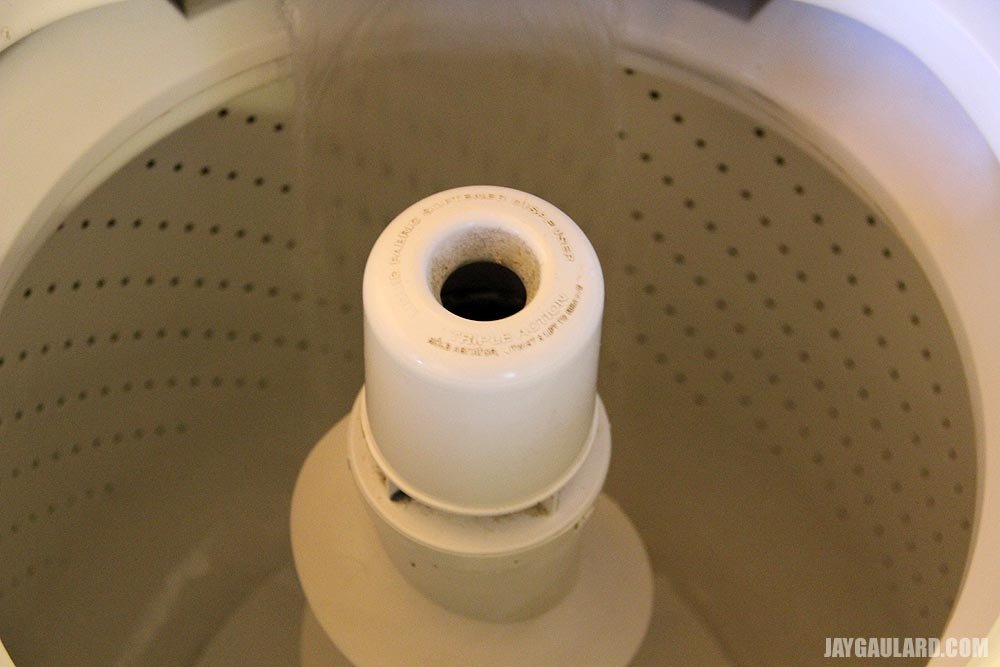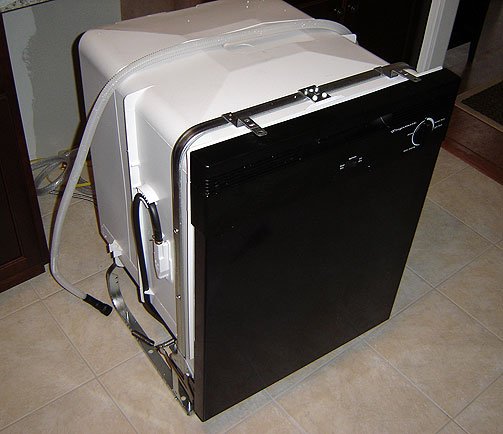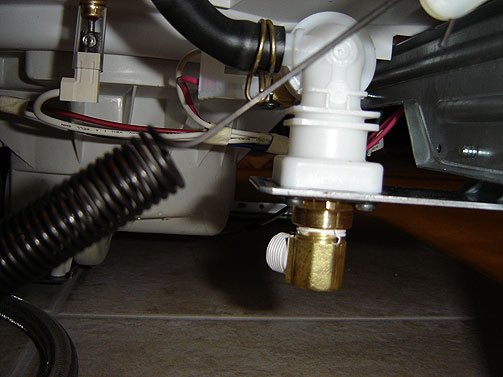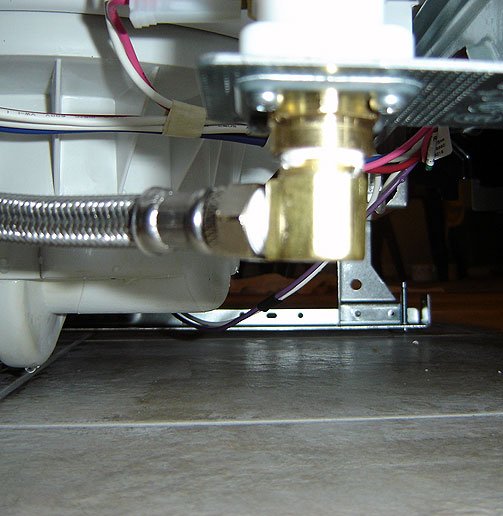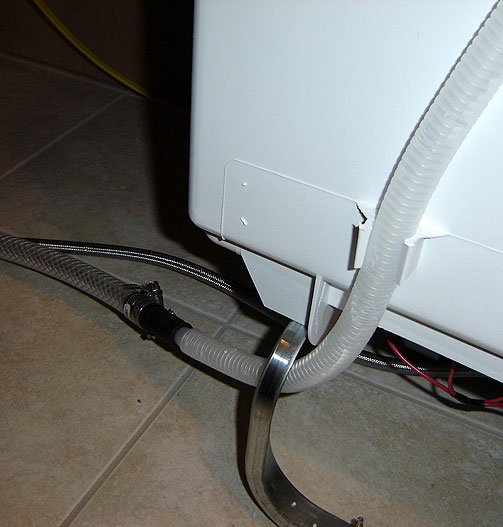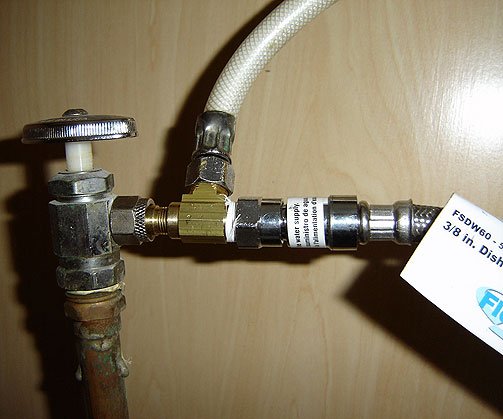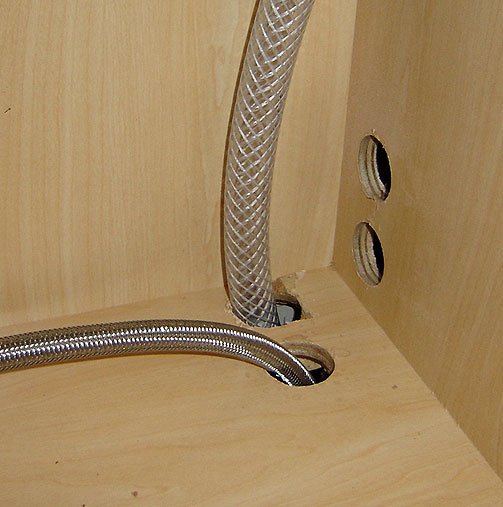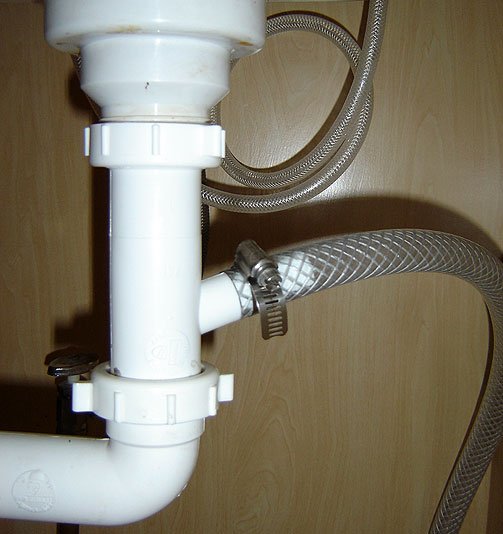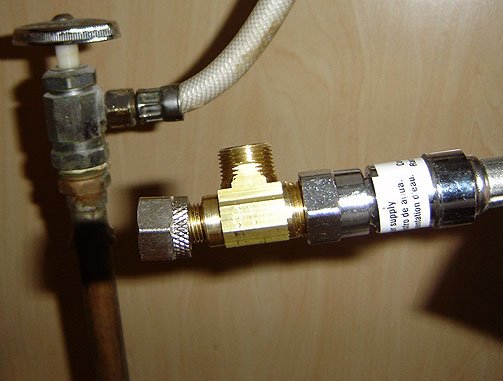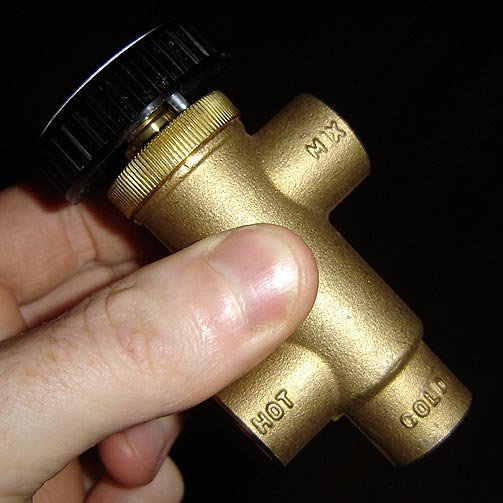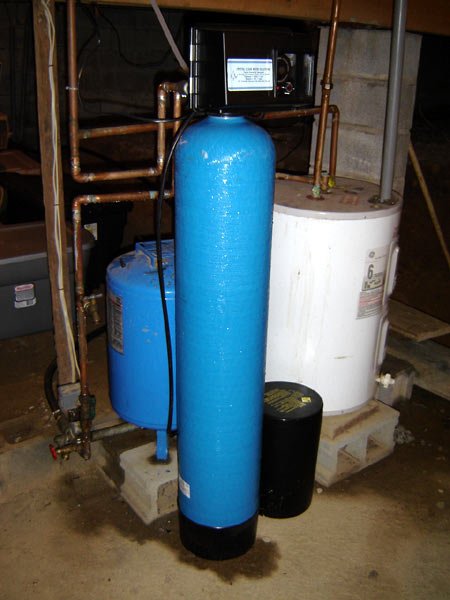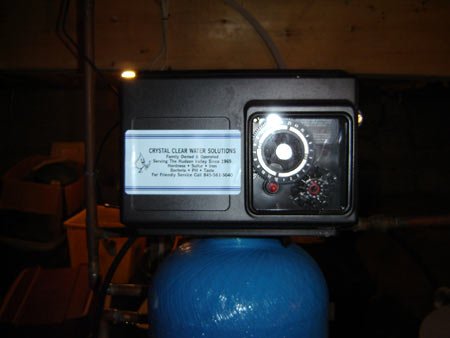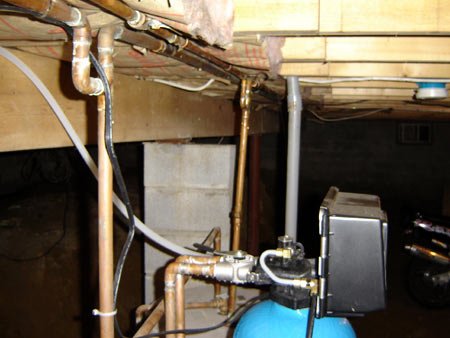Installing a New Kitchen Faucet & Under Sink Water Filter
I have always wanted an under sink water filter. I’m not sure why, especially since we have a whole house filter. I guess it’s because the whole house filter is all the way down in the basement and I keep thinking the water gets all screwed up traveling through the pipes. I like the idea of having a filter close to the tap.
I decided that I had the capabilities to install an under sink water filter myself. I mean, I do have the brains and the patience. It’s not really a hard job, just one that you have to psych yourself into doing because you have to clean out under the sink. You know…all those bottles of who knows what and cans of what the heck it this. Throw in a few old sponges and there you have it – the area below a kitchen sink.
There was one little issue that was in the way of me installing a water filter. The faucet we had installed on the kitchen sink was a bit out dated. It was one of those “one handle” ones that sits right in the middle. Some people prefer that style, but I always liked the two handle ones. In this case, the two handles are preferred because the water filter only runs on the cold line. I like knowing that when I turn on the cold water, only the cold water is running. So, I basically needed a water filter and a new kitchen faucet. Not a problem, I’m really cheap when it comes to kitchen faucets and the filter setup was only $34. It even came with the insert.
Off to Lowe’s I went. When I got there, I strolled down the filter aisle and picked out a “Whirlpool Drop in Filtration System – WHKF-DUF.” This is the $34 jobber I just told you about. I knew what to expect because I already picked it out online. I put the filter in the cart and went over to the next aisle that had all the faucets. There they were, all lined up on the wall. I knew I wanted the chrome Peerless for around $44, but I was forced to get the $68 model because we have a four hole sink. That means that we have that extra little sprayer. You know, the one that you can wrap a rubber band around and sit back in its holder. When someone comes by to turn on the sink, they get sprayed. Yeah, that one.
I picked up the model I needed and put it in my cart. Or what I thought was my cart.
Here’s a funny little story. When I rolled my cart into the faucet aisle, I saw a nice family standing there trying to pick out a kitchen faucet. I noticed that they were kind of just randomly picking things out and didn’t know why. There are differentiating factors in faucets such as the one handle or two that I spoke of above. Also, there is the height of the faucet end. Our old faucet was low, so when I tried to get a large pot filled with water, I had to angle it such a way. Anyway, I broke the ice by saying, “Boy, I feel like I’m part of the family.” They laughed and I laughed. The father just looked at me. There were three of them…the mother, the father and the daughter. Okay, on with the story. I told them about the height issue and why and they were just amazed. As far as I was concerned, they thought I was the cat’s meow. I left the aisle to go out to the garden center.
When I got out to the garden center, I picked out two trees and put them into the cart. I stood back and looked at the faucet. Then, I wondered where the filter was. For the first time in my life, I grabbed the wrong cart. I think it was the faucet aisle family’s cart that I had taken. I left the cart outside in the garden area (because I already had the trees in it) and walked back into the faucet aisle. There it was, my cart with the filter in it. I felt bad for the poor family that had to walk away with no cart, carrying the faucet in their hands. They probably thought I was just fluffing them up earlier so I could steal their cart.
Okay, story time is over. Here are some pictures of the kitchen faucet and under sink water filter installation.
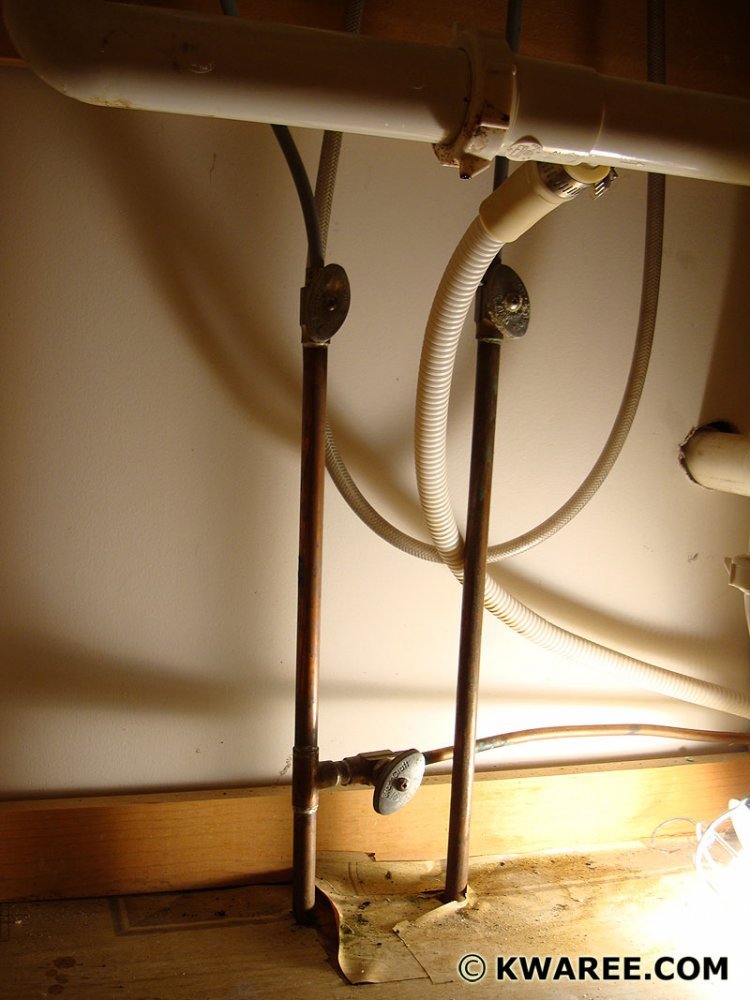
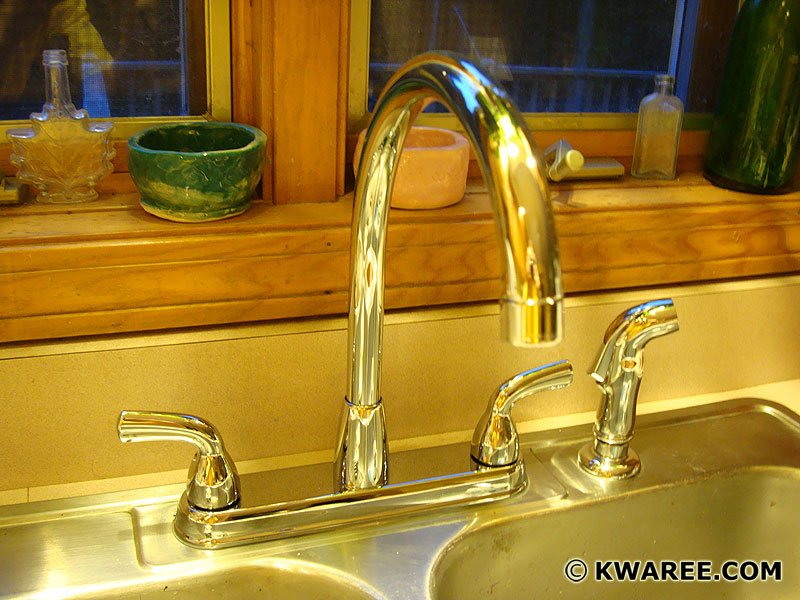

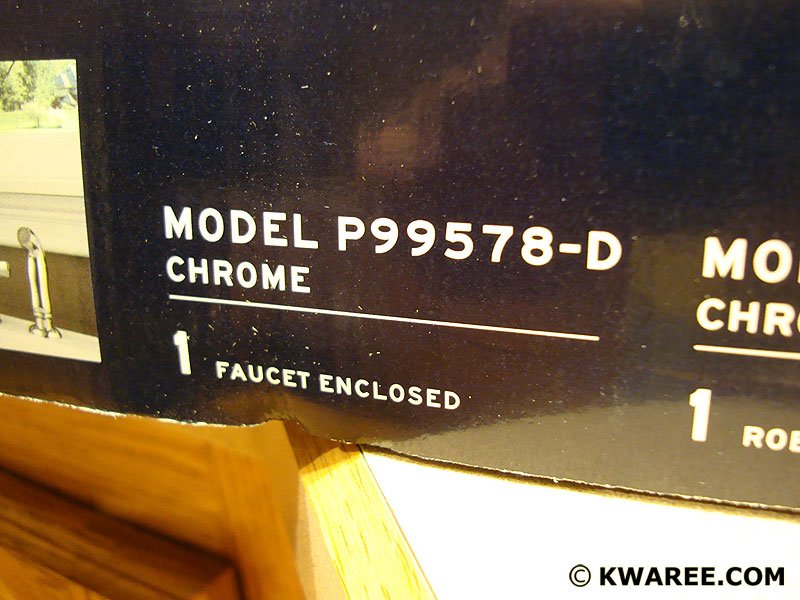

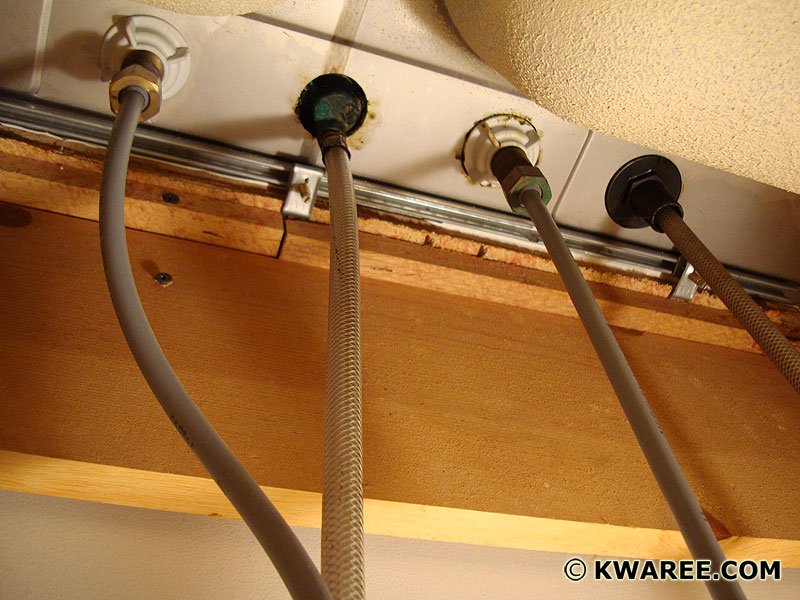
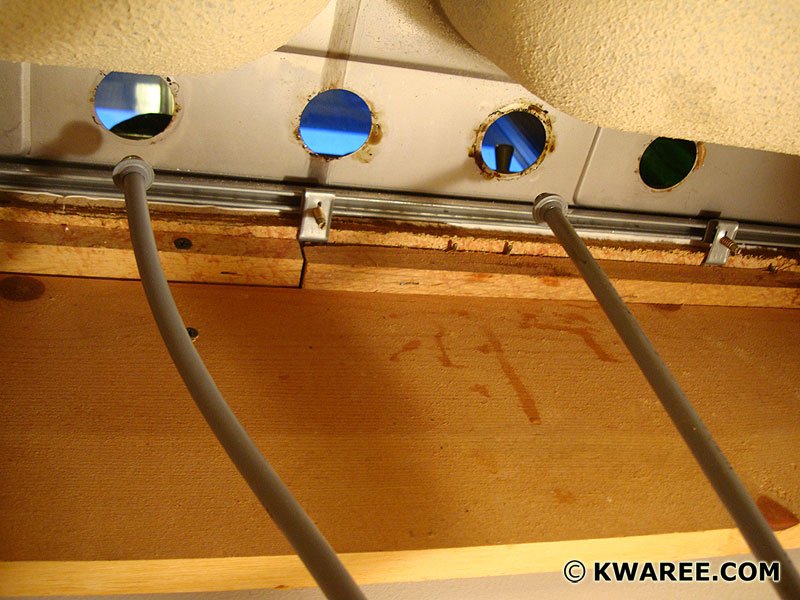
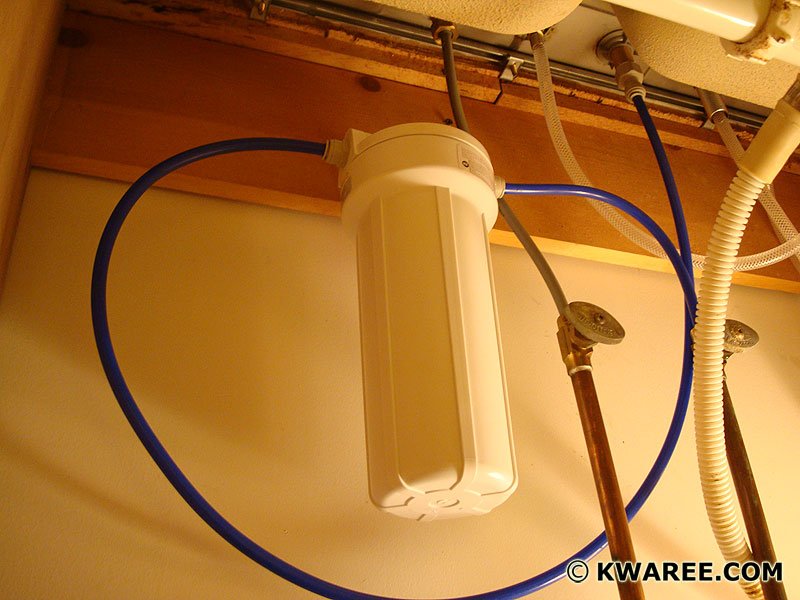
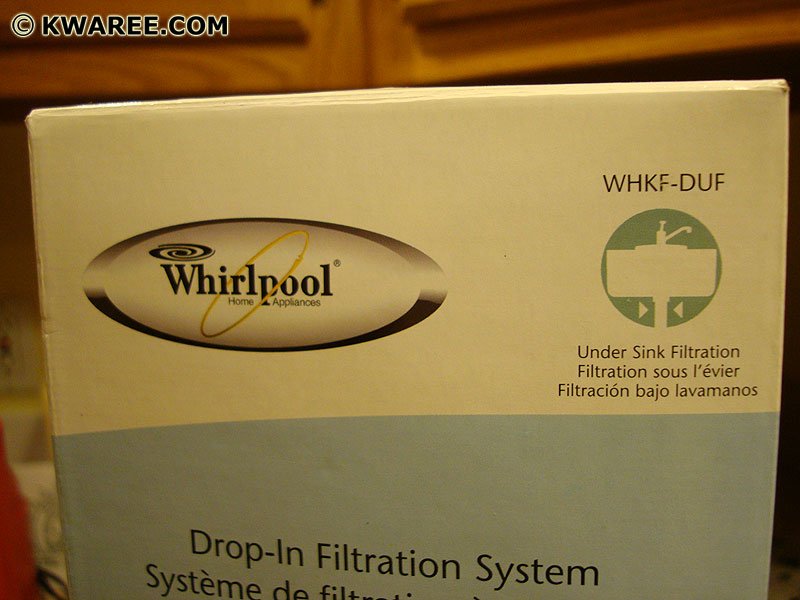
Everything works great and the installation took me about an hour and a half.
I have always wondered why there is such a big price difference between faucets, and doorknobs for that matter. Either I have never used a really high quality faucet or doorknob or I am just missing something. Every time I go shopping for either, I always get the cheapest available and find that they work just great. Maybe I am missing something. Perhaps someone can enlighten me.
COMMENT: Our kitchen faucet is loose and leaky – and kinda ugly. The way Sam and I do projects is sort of like this:
“We should replace that leaky faucet.”
“Yeah. but the whole sink is old and kinda ugly.”
“Yep. so if we’re gonna replace the faucet, we may as well replace the sink, too.”
“True. And if we’re gonna go to all that trouble and expense – let’s just hire someone and have the counters and backsplash re-done, too.”
Next thing you know – we’re refinancing and completely updating the kitchen.
See why we’re steering clear of the leaky faucet thing?
COMMENT: I used to be like that too, until I turned into a utilitarian. Now, I like it if it works. Many years ago, I was sucked into all that HGTV stuff. They got me, I’ll admit. NOT NO MO!!! Now, it’s just a new faucet. That’s it. No more. I am living like they did back in the old days (meaning the 70s). PS – I am also WAY over completely redoing the house and then losing fifty grand when I sell. Yeah, I’m over that too. Now I just live in it.










